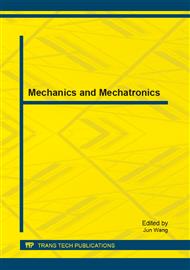p.682
p.688
p.693
p.701
p.706
p.713
p.718
p.725
p.731
Adaptive Fuzzy PID Controller of a Master-Slave Robotic Catheter System in Minimally Invasive Surgery
Abstract:
Minimally Invasive Surgery (MIS) is a good choice to treat cardiovascular disease. However, the accuracy of catheter manipulation is limited by the doctor, and the X-ray damages the health of the doctors. A master-slave Robotic Catheter System (RCS) can solve the disadvantages of the traditional catheter intervention surgery. PID controller has been widely used in the master-slave RCS. However, Traditional PID controller used in the master-slave RCS will cause large overshoot or poor stability. An adaptive fuzzy PID controller can adjust the PID parameters online, reduce the overshoot, and improve the tracking performance of input signal. In this study, the dynamic model of the axial and rotational motion is presented. An adaptive fuzzy PID controller is proposed to improve the performance of the master-slave RCS. Simulation results show that the proposed controller is more effective than the traditional PID control, and the robustness is also improved.
Info:
Periodical:
Pages:
706-712
Citation:
Online since:
October 2013
Authors:
Price:
Сopyright:
© 2013 Trans Tech Publications Ltd. All Rights Reserved
Share:
Citation:


